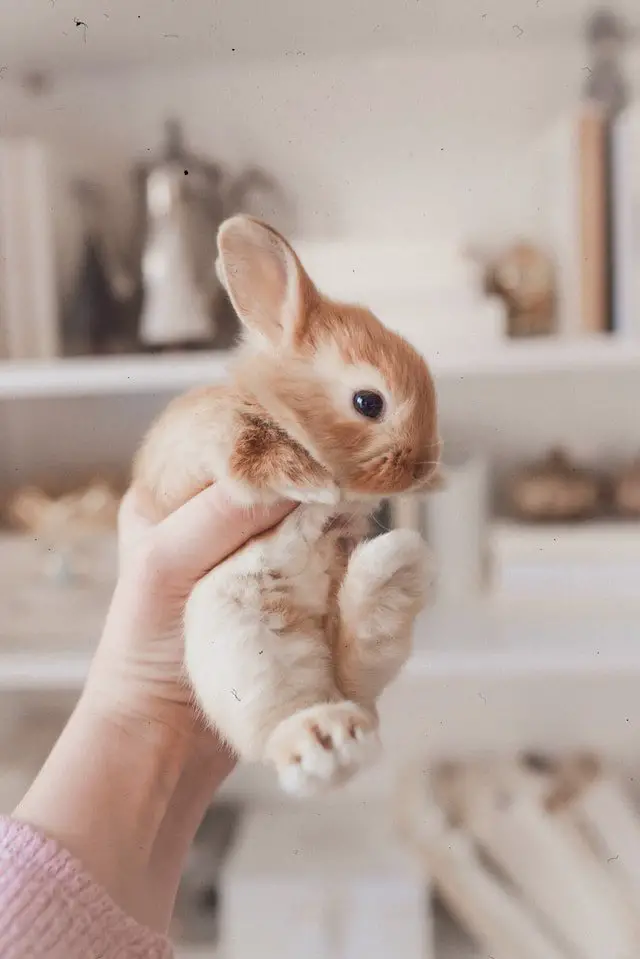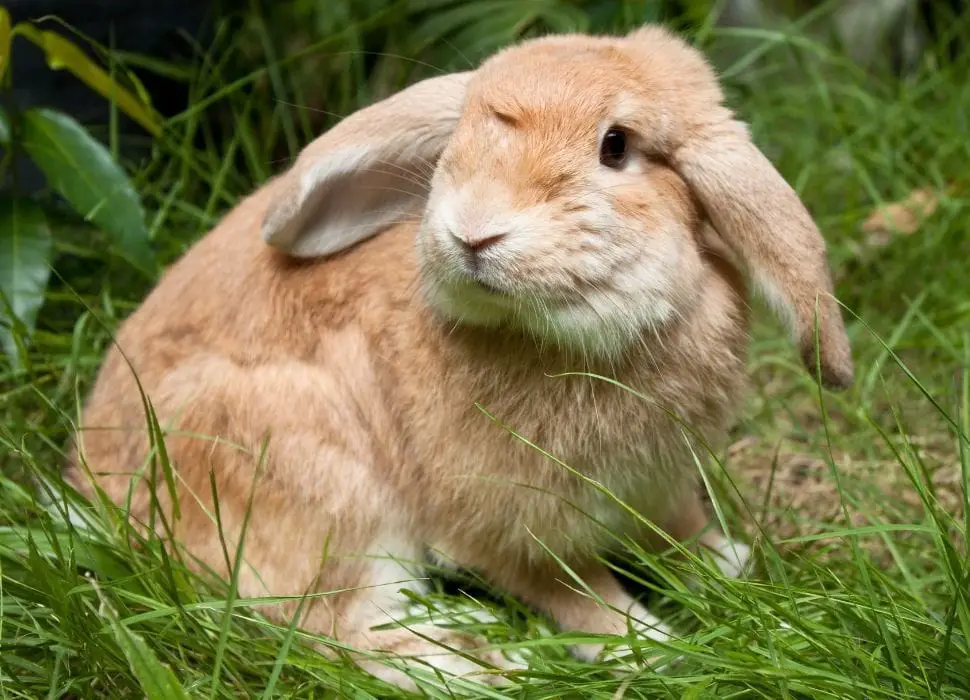Have you ever found yourself wondering, Is a rabbit different to a bunny? It’s a question that has stumped many animal enthusiasts, and perhaps even caused a bit of confusion during your last trip to the pet store or while reading a children’s book to your little ones.
Rabbits and bunnies are, in fact, the same animal. ‘Bunny’ is a term of endearment, often used to refer to young rabbits, while ‘rabbit’ is the official term for this particular species.
Introduction
In the following sections, we’ll delve deeper into this intriguing topic, exploring the origins and usage of the terms ‘rabbit’ and ‘bunny’.

We will delve into their physical and behavioral differences and unravel some popular myths and misconceptions that surround these charming creatures.
This will not only provide clarity but also enhance your understanding if you’re considering adopting one of these as a pet. Buckle up, as we embark on an exciting exploration into the world of rabbits and bunnies.
Understanding the Terminology
The Etymology of ‘Rabbit’
The term ‘rabbit’ has a long history, tracing back to Middle English. Derived from the Old French ‘rabotte’, it originally referred to the young of the species.
Over time, it evolved into its current usage, denoting any individual of the species regardless of age.
In terms of scientific classification, the term ‘rabbit’ refers to small mammals that are part of the family Leporidae, which also includes hares.
Rabbits are known for their long ears, fluffy tails, and propensity for rapid reproduction – facts that often factor into our everyday conversations and cultural references.
Origin and Usage of ‘Bunny’
‘Bunny’, on the other hand, is a term with more affectionate connotations. Originating as a term of endearment in late 17th century English, ‘bunny’ was initially used to refer to small creatures, especially rabbits.
In today’s usage, ‘bunny’ typically refers to young rabbits, similar to how ‘kitten’ is used for young cats.
However, it is also broadly used to refer to any rabbit, regardless of age, particularly in informal and colloquial contexts.
It’s this duality in usage that often leads to confusion about whether a bunny and a rabbit are the same or different creatures.
Interchangeable or Not?
While ‘rabbit’ and ‘bunny’ might refer to the same creature, the context in which these words are used can greatly influence their meanings.
‘Rabbit’ is the more formal and universally accepted term, used in scientific, educational, and official contexts.
‘Bunny’, while still widely understood, has a more informal and affectionate tone. It’s often used in casual conversations, children’s literature, and within families as a term of endearment for these lovable creatures.

Understanding these nuances in terminology not only enhances our appreciation for these creatures but also helps us communicate more effectively about them.
This becomes particularly important when considering pet ownership, a topic we’ll delve into more deeply as we progress through this enlightening exploration.
Detailed Comparison Between Rabbits and Bunnies
Age, Size, and Physical Appearance
When we refer to a ‘bunny’, we’re often thinking of a young rabbit. Bunnies, or rabbit kits, are smaller in size, have softer fur, and display a sense of curiosity characteristic of youth.
As they grow and mature, they evolve into what we conventionally refer to as ‘rabbits’.
A fully-grown rabbit exhibits distinguishable features like a larger size, denser fur, and more pronounced physical characteristics.

This differentiation between young and mature individuals is common in many species and helps us navigate our interactions with these animals more effectively.
Behavior and Habits
Young rabbits or bunnies display certain behaviors that distinguish them from their adult counterparts. Bunnies, like most young animals, are usually more playful and energetic, exploring their environment with wide-eyed wonder.
As rabbits grow older, their behavior evolves. Mature rabbits are typically calmer and more settled than their younger counterparts, although individual personalities can vary.
They also develop a keen sense of social hierarchy and territory, traits less commonly observed in bunnies.
Lifespan and Breeding
Understanding the lifecycle of a rabbit is essential when considering the terminology. Bunnies, or young rabbits, generally reach sexual maturity at around 3 to 6 months of age, depending on the breed.
Once mature, rabbits have a relatively long lifespan for small animals. They can live anywhere from 8 to 12 years in captivity with appropriate care.
Knowing these details can significantly inform your care approach if you’re considering bringing a rabbit – or a bunny – into your family.
With a firm understanding of the differences associated with rabbits and bunnies, we can now explore some common myths and misconceptions surrounding these charming creatures.
Unraveling these will further deepen our appreciation and understanding of our rabbit companions.
Popular Myths and Misconceptions
All Rabbits are Bunnies and All Bunnies are Rabbits
One of the most pervasive misconceptions is that the terms ‘rabbit’ and ‘bunny’ are interchangeable for all age groups and contexts.
As we’ve already clarified, the term ‘bunny’ usually refers to a young rabbit. While it is often used to refer to any rabbit in colloquial speech, this does not technically make every rabbit a ‘bunny’.
This myth likely stems from the adorable image we associate with both terms, which conjures thoughts of cuddly, fluffy creatures. Remember, while all bunnies are rabbits, not all rabbits are bunnies.
Bunnies are Just Baby Rabbits
While ‘bunny’ is often used to refer to baby rabbits, it’s not a scientifically recognized term. The accurate term for a baby rabbit is ‘kit’ or ‘kitten’.
‘Bunny’ has become a popular term due to its use in children’s literature and common vernacular, but it’s not grounded in scientific classification.

It’s important to distinguish between popular usage and formal language, particularly in an educational or scientific context. This helps ensure accurate communication and understanding.
Rabbits and Bunnies are Different Species
There’s a prevailing myth that rabbits and bunnies are entirely different species. This is not true.
The confusion probably arises from the differences in the terms’ usage and the distinct behaviors exhibited by rabbits at different stages of their lives.
As we’ve established, rabbits and bunnies refer to the same creature but at different life stages. Understanding this can prevent unnecessary confusion and enhance our understanding of these delightful animals.
Dispelling these myths and misconceptions enables us to appreciate these creatures in all their charm and complexity.
However, recognizing the implications of our terminology is particularly crucial when considering owning one of these animals.
It’s in this context that our words take on a practical significance, influencing our choices and approach to care.
Importance of Correct Terminology in Pet Ownership
Knowing What You’re Adopting
When considering adopting a rabbit as a pet, it’s crucial to understand whether you’re getting a ‘rabbit’ or a ‘bunny’.
An adult rabbit and a young rabbit, or bunny, have different needs regarding diet, environment, socialization, and veterinary care.
If you adopt a bunny, you should be prepared for the energetic exploration and playfulness that comes with youth.
As they mature, your care approach will need to adapt, transitioning from the needs of a young bunny to those of an adult rabbit.
Communicating with Veterinarians and Pet Stores
Using the right terminology is essential when dealing with veterinarians and pet stores. When you use the correct term, you can be sure you’re getting the right products, advice, and services for your pet.
For instance, when buying food or asking for medical advice, it’s helpful to clarify whether you’re caring for a bunny or a mature rabbit.
Different life stages require different nutrition and medical considerations, and using the correct terminology can ensure your pet gets the care it needs.
Participating in Pet Owner Communities
Pet owner communities can be a valuable source of advice, tips, and companionship for both you and your pet.
Using the correct terminology when interacting with these communities can ensure clear communication and help you access the most relevant and useful information.
Whether you’re seeking advice on diet, behavior, or health issues, knowing whether to ask about a bunny or a rabbit can make a significant difference in the quality of advice you receive.
Armed with an understanding of the correct terminology and its importance in the context of pet ownership, we can now address some common questions that may still linger.
In doing so, we continue to deepen our understanding and appreciation of these charming creatures.
Conclusion
So, when asked the question, “Is a rabbit different to a bunny?”, we now understand that it’s not quite as straightforward as it might first seem.
The way we use words matters, particularly when those words pertain to the lovable, fluffy creatures that are rabbits and bunnies.
Whether you’re an aspiring pet owner, a curious linguist, or just someone who enjoys delving into fascinating topics, understanding the nuances of these terms enriches our view of the world.
As we continue our exploration of animals and their fascinating lives, we take this understanding with us, ready to apply our knowledge to our next intriguing question.
Frequently Asked Questions
What is a baby rabbit called?
A baby rabbit is technically referred to as a ‘kit’ or ‘kitten’. The term ‘bunny’ is a colloquialism often used to denote a young rabbit.
At what age does a bunny become a rabbit?
Bunnies (young rabbits) typically mature into adulthood at around 3 to 6 months of age, depending on the breed.
Can the terms ‘rabbit’ and ‘bunny’ be used interchangeably?
While ‘rabbit’ and ‘bunny’ can both refer to the same animal, ‘rabbit’ is more formal, and ‘bunny’ is often used to refer to young or affectionately regarded rabbits.
What is the lifespan of a rabbit?
Rabbits have a relatively long lifespan for small mammals. In captivity, with appropriate care, they can live anywhere from 8 to 12 years.
Are rabbits and bunnies different species?
Rabbits and bunnies are not different species. The term ‘bunny’ is often used to refer to a young rabbit, while ‘rabbit’ is the more formal term for individuals of any age.
